The hard turrón is one of the most classic and ancient, recognized worldwide and unmistakable for its white color and hardness. It is very typical of the province of Alicante and cannot be missed at any family gathering at Christmas time. Its preparation comes mainly from two very Mediterranean ingredients such as almonds and honey, which is why in many places it is also known as almond nougat, as these are arranged whole instead of in pieces.
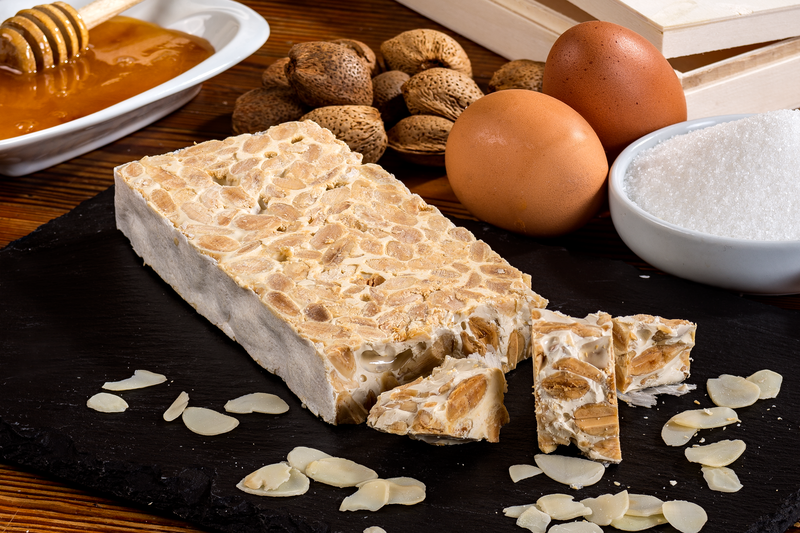
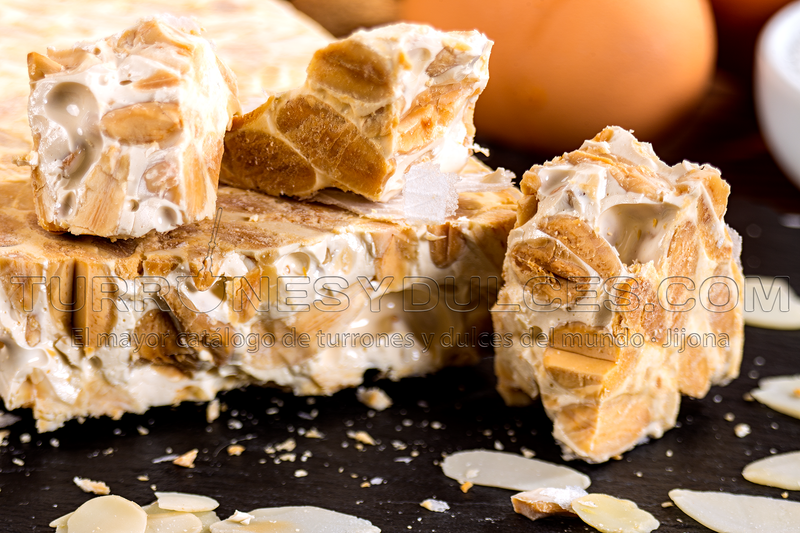
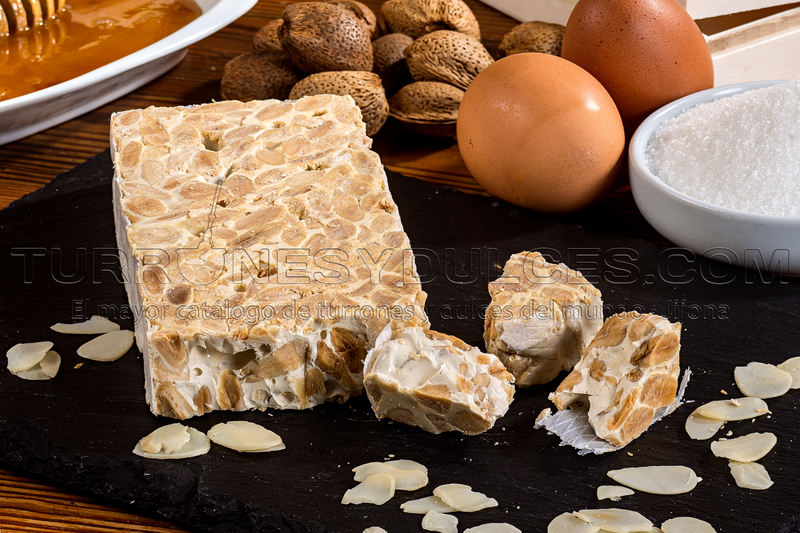
Hard Nougat Formats
The hard nougat usually comes in a traditional 300 gram bar format. Surely we all have the scene recorded in our minds of our father or grandfather breaking it against the table or the floor, or even with some kitchen utensil. This is another of the particularities of this turrón and is part of the experience of eating it. In some areas of northern Spain it is common to serve it in 500 and 600 gram bars, which makes this process even more fun.
The hard turrón is also usually presented in cakes, also known as Tortas Imperiales, normally in a weight of 200 grams and more extended, which allows to break it with the fingers comfortably. Over the years, the traditional bars have also become popular, which are divided into two 150-gram tablets to avoid having to break them beforehand.
Ingredients of the hard turrón
It is made from only 4 ingredients, and without any chemical additives. These are:
- The almond, preferably Marcona, is usually used in a percentage that varies between 60% and 65% to be considered a nougat with the seal of Supreme Quality.
- The honey 100% of bee, which is around 17% and 20%. Depending on the type of honey the nougat can have a stronger or lighter flavor. The most used are orange blossom honey, rosemary honey or honey thousand flowers. Eucalyptus is usually discarded because of its intense flavor.
- Sugar, should not exceed 15% and always less than honey.
- Egg white, is what gives it that characteristic white color and part of its rigidity.
In most cases this nougat usually comes with sheets of wafers attached to its sides, but is not its main ingredient and there are times that may not be included.
Why is it called Turrón de Alicante?
The original name to refer to it is Turrón de Alicante, although we understand that due to its hard consistency it has been called "turrón duro" (hard nougat). On the other hand, the title of Turrón de Alicante has been protected by a seal of Denominación de origen for over five centuries. This means that for a Turrón de Alicante to be protected by the Protected Geographical Indication it must follow rigorous and ancient production processes just as its brother, the turrón de Jijona (known as soft turrón):
- Quality of the ingredients and minimum percentages
- Machinery and capacity used in the process
- Steps to follow during the elaboration process
- Time of rest
- And finally and most importantly, the turrón must be made in Jijona in order to obtain the seal.
This means that any turron produced in another town cannot be considered Turrón de Alicante and will be commonly called Turrón Duro, which means that the rest of the conditions may not have been respected either and therefore we are faced with a lower quality product.
In Jijona they say that there is a microclimate, unique in all of Spain, and the most knowledgeable (and perhaps nostalgic) people say that this is the secret of the turrón made in Jijona. There are nougat companies that have opened factories in other areas of Spain and the world, such as Argentina and Cuba, and they claim that nougat has a special flavour if it is only made in Jijona. There is no need to look for more mystery.
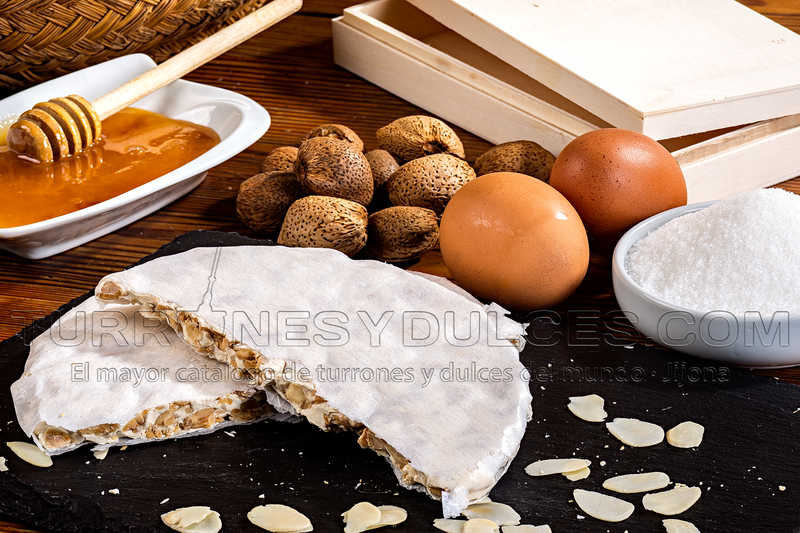
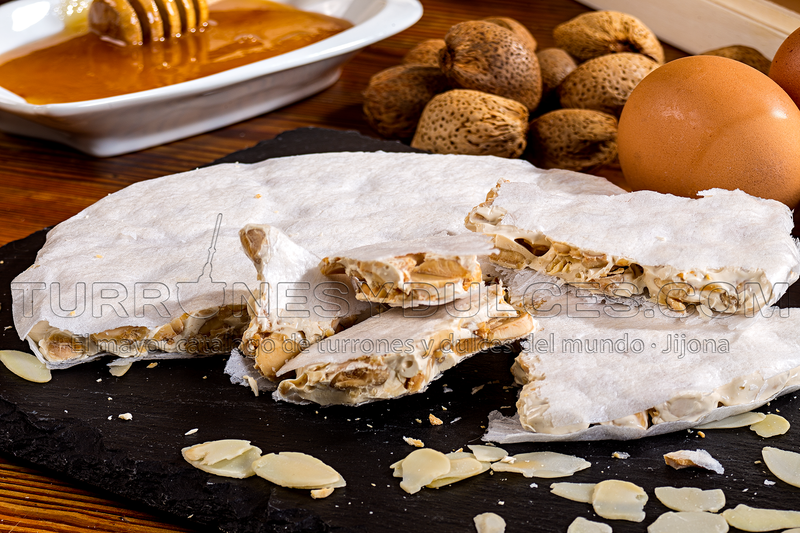
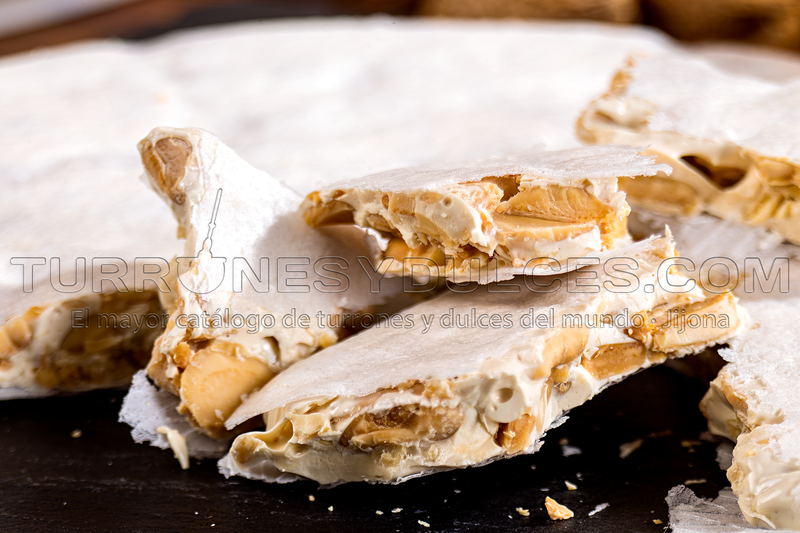
How to make hard turron
Next we are going to define how to make hard turrón, in our case turrón de Alicante, since we make it in Jijona.
- The peeled almonds are toasted in rotating cylinders heated over an intense fire, called "tostadores".
- Afterwards, we use machines called "mechanical", with a capacity of 50 to 60 kg, where the honey, previously heated, and the sugar are cooked over a high heat.
- At this point, the egg white is added until the water generated evaporates. At this point, the toasted almonds are added and the mixture is turned by hand with shovels until a homogeneous mixture is obtained.
- The mixture is then placed in 6 kg wafer-covered crates where it is kneaded while still hot to form a block. The curious thing about this step is that it was formerly done with wooden moulds which, due to health regulations, have been completely replaced by plastic crates.
- The blocks are then sawed to obtain the tablets of the desired weight.
Below is a video of how hard nougat is made in our factory.
Recipe for turrón duro
At this point you are probably wondering how to make homemade turrón, well, even if you can't use the same machinery it is possible to replicate it in our houses and for them we have prepared the following recipe for hard turrón to make at home. Again we leave a video summary on how to make almond nougat but we invite you to read the full recipe in the section we have enabled for it.










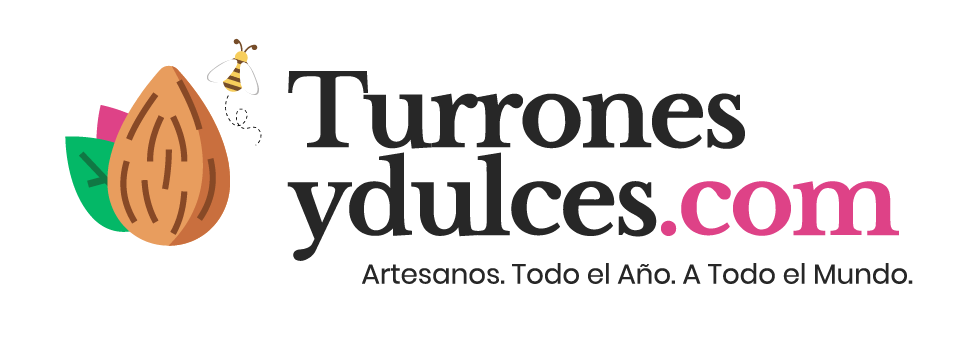




 Turron from Spain
Turron from Spain












 Marzipan
Marzipan







 Polvorones
Polvorones 





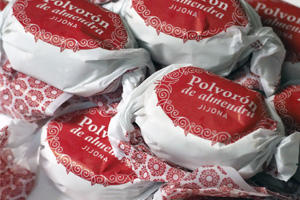
 Chocolates
Chocolates







 Sugar Almonds
Sugar Almonds

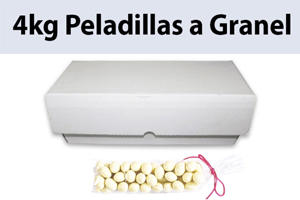
 Gifts - Bundles
Gifts - Bundles


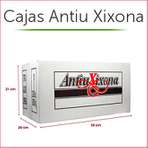
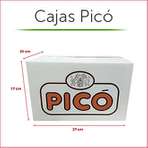
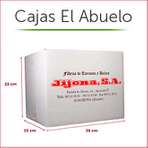
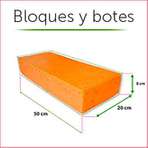
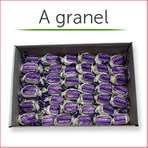
 Sweets and candies
Sweets and candies 









